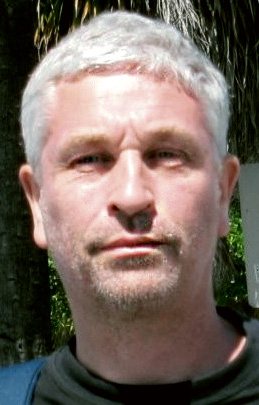/ Featured Blogs
Can ICANN Survive Today’s Global Geo-Political Challenges Under Its Existing Narrow Mandate?
 Recently, the Presidents of four Latin American countries slammed ICANN over its .amazon domain name decision. This added to a long list of geo-politically infused challenges which ICANN needed to render final decisions on after all delay tactics or deferments had already been fully exhausted. It is clear that ICANN is facing unprecedented challenges as it tackles issues that go beyond its current narrow mandate. more
Recently, the Presidents of four Latin American countries slammed ICANN over its .amazon domain name decision. This added to a long list of geo-politically infused challenges which ICANN needed to render final decisions on after all delay tactics or deferments had already been fully exhausted. It is clear that ICANN is facing unprecedented challenges as it tackles issues that go beyond its current narrow mandate. more
- By Khaled Fattal
- Comments: 1
- Views: 8,098
Afnic Reveals the Results of Its Study of the World’s Domain Name Market in 2018
 A new publication of Afnic deals with the overall trends of the Domain Name market in 2018. The publication of ICANN statistics as at the end of last year allows a quantified assessment of 2018, a period of moderate upswing after the "set-down" of 2017. The data on which this study is based come from ICANN reports from information provided by registries in certain frameworks. more
A new publication of Afnic deals with the overall trends of the Domain Name market in 2018. The publication of ICANN statistics as at the end of last year allows a quantified assessment of 2018, a period of moderate upswing after the "set-down" of 2017. The data on which this study is based come from ICANN reports from information provided by registries in certain frameworks. more
- By Loic Damilaville
- Comments: 0
- Views: 6,958
Squirrels Are the Number One Culprit for Animal Damage to Aerial Fiber
 These cute rodents are the number one culprit for animal damage to aerial fiber. To a lesser degree, fiber owners report similar damage by rats and mice. Squirrels mainly chew on cables as a way to sharpen their teeth. Squirrel teeth grow up to 8 inches per year and if squirrels aren't wearing their teeth down from their diet, they look for other things to chew. more
These cute rodents are the number one culprit for animal damage to aerial fiber. To a lesser degree, fiber owners report similar damage by rats and mice. Squirrels mainly chew on cables as a way to sharpen their teeth. Squirrel teeth grow up to 8 inches per year and if squirrels aren't wearing their teeth down from their diet, they look for other things to chew. more
- By Doug Dawson
- Comments: 0
- Views: 27,886
Hongyun Project – China’s Low-Earth Orbit Broadband Internet Project
 Last December, State-owned China Aerospace Science and Industry Corporation (CASIC) launched the first experimental Hongyun (rainbow cloud) Project satellite, and they began testing it in March. The 247 kg test satellite is in orbit at an altitude of around 1,100 km, and they plan to launch four more test satellites this year and begin operating with a 156-satellite constellation in 2022. more
Last December, State-owned China Aerospace Science and Industry Corporation (CASIC) launched the first experimental Hongyun (rainbow cloud) Project satellite, and they began testing it in March. The 247 kg test satellite is in orbit at an altitude of around 1,100 km, and they plan to launch four more test satellites this year and begin operating with a 156-satellite constellation in 2022. more
- By Larry Press
- Comments: 0
- Views: 14,552
ICANN and Voodoo Economics in Wonderland
 The exposed areas needing improvement by ICANN - both the organization as well as its global community of stakeholders - provide a target-rich environment. In the nearly three years since the completion of the transition of the Internet Assigned Names Authority (IANA), ICANN has persistently sought to drive top-down dictatorial policymaking; to shroud its activities and decision-making from public view; and, to evade accountability -- in some cases even doubling down on its efforts. more
The exposed areas needing improvement by ICANN - both the organization as well as its global community of stakeholders - provide a target-rich environment. In the nearly three years since the completion of the transition of the Internet Assigned Names Authority (IANA), ICANN has persistently sought to drive top-down dictatorial policymaking; to shroud its activities and decision-making from public view; and, to evade accountability -- in some cases even doubling down on its efforts. more
- By Greg Thomas
- Comments: 0
- Views: 7,599
Trade War Is Turning Into a Technology War
 President Trump knows that in the current trade war, the Huawei issue is perhaps one of the most important issues for the Chinese government. It directly undermines the Chinese prestige and the ban create global anxiety. This is resulting in discussions in many countries, assessing their relationship with China. It highlights the domination of the Chinese in telecoms manufacturing, but at the same time, it opens up other discussions in relation to Chinese dominance and influence. more
President Trump knows that in the current trade war, the Huawei issue is perhaps one of the most important issues for the Chinese government. It directly undermines the Chinese prestige and the ban create global anxiety. This is resulting in discussions in many countries, assessing their relationship with China. It highlights the domination of the Chinese in telecoms manufacturing, but at the same time, it opens up other discussions in relation to Chinese dominance and influence. more
- By Paul Budde
- Comments: 0
- Views: 5,500
Does China’s Digital Silk Road to Latin America and the Caribbean Run Through Cuba?
 China's Belt and Road Initiative (BRI) is an ambitious, long-term, global investment and development program. It was launched in 2013 with a focus on infrastructure -- roads, railroads, pipelines, undersea cables and ports. Since then China has invested $80 billion and signed 173 BRI agreements with 125 countries and 29 international organizations. more
China's Belt and Road Initiative (BRI) is an ambitious, long-term, global investment and development program. It was launched in 2013 with a focus on infrastructure -- roads, railroads, pipelines, undersea cables and ports. Since then China has invested $80 billion and signed 173 BRI agreements with 125 countries and 29 international organizations. more
- By Larry Press
- Comments: 0
- Views: 12,782
What Does It Mean to Deploy DMARC?
 The IETF's DMARC working group is thinking about a maintenance update to the DMARC spec, fixing bits that are unclear and perhaps changing it where what mail servers do doesn't exactly agree with what it says. Someone noted that a lot of mailers claim to have "deployed DMARC," and it's not at all clear what that really means. ... I've suggested that we could write a DMARC deployment guide that describes the parts of DMARC, the ways they interact and in what sequence it's useful to deploy them. If you'd find that useful, leave a comment. more
The IETF's DMARC working group is thinking about a maintenance update to the DMARC spec, fixing bits that are unclear and perhaps changing it where what mail servers do doesn't exactly agree with what it says. Someone noted that a lot of mailers claim to have "deployed DMARC," and it's not at all clear what that really means. ... I've suggested that we could write a DMARC deployment guide that describes the parts of DMARC, the ways they interact and in what sequence it's useful to deploy them. If you'd find that useful, leave a comment. more
- By John Levine
- Comments: 2
- Views: 8,539
A Quick Look at the 4 Most Prevalent Types of Threat Intelligence
 You won't go far with your cybersecurity when you're relying on the wrong intelligence. This is simply because not all types of threat intelligence are equal. You might have experienced this yourself; investing time and resources into just one only to receive meagre results in the end. Sadly, many organizations fail to realize that depending on just a single source of information is a big mistake. more
You won't go far with your cybersecurity when you're relying on the wrong intelligence. This is simply because not all types of threat intelligence are equal. You might have experienced this yourself; investing time and resources into just one only to receive meagre results in the end. Sadly, many organizations fail to realize that depending on just a single source of information is a big mistake. more
- By Jonathan Zhang
- Comments: 0
- Views: 11,409
Digging Into IPv6 Traffic to Google: Is 28% Deployment Really the Limit?
 After some years of accelerating IPv6 deployment, we are now into a period of slower growth and it's not clear where we are heading. It is therefore interesting to try to predict the future of IPv6 over the coming years. At Ericsson Research, we have been working on this topic since 2013, but just recently created a forecast model that seems to be quite accurate. However, it gives a disappointing message of a very low final level of IPv6 deployment at less than 30%! more
After some years of accelerating IPv6 deployment, we are now into a period of slower growth and it's not clear where we are heading. It is therefore interesting to try to predict the future of IPv6 over the coming years. At Ericsson Research, we have been working on this topic since 2013, but just recently created a forecast model that seems to be quite accurate. However, it gives a disappointing message of a very low final level of IPv6 deployment at less than 30%! more
- By Christofer Flinta
- Comments: 12
- Views: 27,891